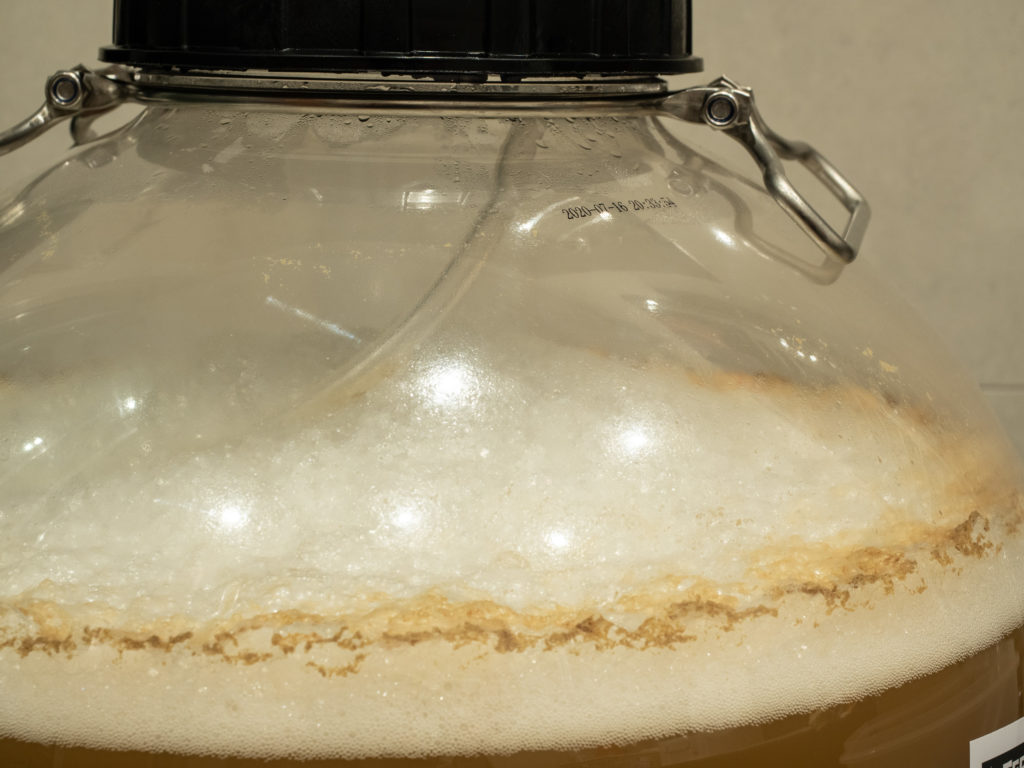After reading an interesting article by Scott Janish I decided to start pressure fermenting a little earlier than originally planned with this brew. Scott also thinks that pressure inhibits the release of esters and fusel flavours and makes a case for pressure fermenting right from the start, but what’s interesting here is that there’s also a suggestion that some of the hops’ oils are lost along with the CO2 in unpressurised fermentation. Keeping that hoppy goodness locked in is one of the main goals for me, so I’m wiling to gamble a little with potential loss of mouth-feel and maltiness (which my brews to date have in abundance) in return for a little more hops. I therefore decided to ditch the airlock just 24 hours into primary and fit my new spunding valve instead.
The whole process was very easy; just unscrew the cap with the airlock, fit a freshly sanitised carbonation cap, click on the spunding valve kit. Rather than letting the pressure build naturally and then knock it back, I decided to add CO2 via the dip tube allowing me to adjust the spunding valve there and then, settling on 10 PSI for now.
I did have some concern about the building Krausen getting into my shiny new valve and briefly toyed with the idea of patching the Fermzilla to a spare keg and then fitting the valve to the keg instead, but I needn’t have worried: within 30 minutes of adding pressure the Krausen has retreated significantly and continues to shrink as I write. I believe this is another expected positive side-effect of pressurised fermentation which allows brewers to get better returns from smaller vessels including Cornelius kegs, since less room is lost to head-space.



